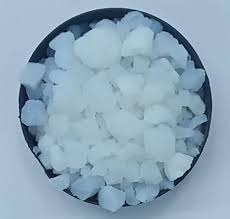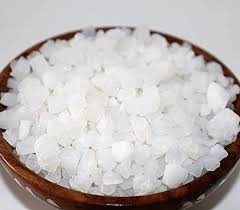
The Role of Banslochan in Ancient Scriptures
Banslochan, also known as Tabasheer or Bamboo Manna, is a crystalline substance sourced from the internodes of female bamboo plants. While modern Ayurvedic practices celebrate its rejuvenating and cooling effects, the true depth of Banslochan’s significance is revealed in ancient Indian scriptures and classical texts.
From the Vedas to Ayurveda, and from Tantric manuals to devotional pooja granthas, Banslochan finds mention not only as a medicinal agent but as a sacred component used in rituals, mental purification, and spiritual enhancement. For generations, spiritual seekers, Ayurvedic practitioners, and Vedic scholars have trusted Banslochan for its sattvic properties and symbolic importance.
In this comprehensive article by Dirghaanshi, we will explore the role of Banslochan in ancient scriptures, examining how it was viewed, prescribed, and ritualized in traditional Indian knowledge systems. Understanding these ancient perspectives allows us to honor this natural gift not just as a remedy—but as a sacred ally on the path to physical and spiritual wellness.
Long Description
What is Banslochan? A Scriptural Overview
Banslochan (Tabasheer) is a translucent white or bluish substance found naturally inside the hollow joints of the bamboo plant (Bambusa arundinacea). Its Sanskrit name, “Tvakshira”, translates to “bamboo sugar” or “bamboo exudate.” It contains silica, calcium, and other trace minerals and has long been used in Ayurvedic formulations as a cooling and rejuvenating tonic.
However, the scriptural relevance of Banslochan goes beyond the physical. It has symbolic, energetic, and ritualistic roles in ancient Hindu philosophy.
Banslochan in Ayurvedic Texts
- Bhavaprakasha Nighantu
One of the key Ayurvedic pharmacopeias, the Bhavaprakasha, lists Banslochan under the category of “Upavisha Dravyas” (minor medicinal minerals) and classifies it as:
Sheeta Virya (cooling in energy)
Madhura Rasa (sweet taste)
Rasayana (rejuvenator)
Balya (strength-giving)
Useful for treating burning sensations, cough, and general weakness
The text also emphasizes its use during pediatric care, postpartum recovery, and seasonal fevers, showing its vital place in daily health routines prescribed by sages.
- Charaka Samhita
Although direct mention is limited, the Charaka Samhita, one of the oldest Ayurvedic treatises, supports the use of minerals like Banslochan in formulations that:
Enhance ojas (vital life force)
Protect against heat imbalances
Aid in mental clarity and spiritual steadiness
Banslochan fits these purposes due to its tridosha-balancing nature.
Banslochan in Vedic and Puranic References
- Symbol of Purity and Sacredness
In Vedic rituals, natural elements that are untouched, pure, and cooling are considered ideal for invoking divine blessings. Banslochan, being the crystalline essence of bamboo, is treated as a symbol of sattva (purity, clarity, peace).
Scriptures associate it with:
Chandradeva (Moon God) – due to its cooling, stabilizing nature
Lord Shiva – as a component in abhisheka preparations
Shakti rituals – as part of feminine energizing ingredients
- Part of Homa and Yajna Offerings
The Yajurveda and later Smriti texts mention a variety of samagri (ingredients) used in yajnas (fire rituals), where elements like ghee, herbs, and minerals are offered to the sacred fire.
Banslochan was used:
As a smoke-purifier
For its calming aroma and energetic effect
To represent the crystallized nectar of plant energy
Banslochan in Tantric and Yogic Scriptures
Tantric traditions, especially those aligned with Kundalini and Chakra systems, often included specific natural substances to stabilize energy and open spiritual pathways.
- Chakra Activation
Banslochan was considered beneficial for the Ajna (Third Eye) and Sahasrara (Crown) chakras, assisting in:
Meditation focus
Mental cooling
Energetic protection
Some ancient texts advised its use in tilak paste, made from Banslochan, sandalwood, and tulsi, for meditative sadhana.
- Used in Rasayana Tantra
In Rasayana Tantra, which deals with longevity, rejuvenation, and spiritual evolution, Banslochan is listed as a shuddha dravya (purifying agent) that supports:
Brahmacharya (celibacy and energy retention)
Manas shuddhi (mental clarity)
Tamas-nivaran (removal of darkness/ignorance)
Role in Devotional and Temple Practices
- As Tilak and Holy Powder
Temple priests in ancient India used a special paste made from Banslochan and cow ghee to:
Apply to deities’ idols during daily alankaras (decorations)
Bless devotees with shanti and strength
Use on ritual tools and shankha (conch) to sanctify energy
- In Navratri and Durga Worship
During Navratri, Banslochan is used in Devi Pooja:
Mixed with honey or ghee and offered as naivedya
Symbolizes cooling grace and divine femininity
- Brahmacharya and Tapasya Aid
In ancient ashrams and gurukuls, spiritual aspirants were given tiny doses of Banslochan mixed with warm milk and herbs to:
Enhance concentration during chanting
Curb heat from long hours of tapasya
Maintain mental balance and discipline
Spiritual Symbolism in Scriptures
Scripture Context Banslochan’s Role
Vedas Purity, cooling, offering to fire
Upanishads Representative of inner essence
Tantras Energy balancing, chakra cleansing
Puranas Used in divine offerings and stories
Ayurveda Rasayana, rejuvenation, cooling aid
Banslochan thus becomes a multi-layered symbol—physical, spiritual, and cosmic.
Practical Scriptural Uses Summarized
Offer in havan for sattvic fire
Mix in prasad to balance Pitta during vrat
Use in tilak for mental calm and clarity
Combine with ghee and tulsi as abhishekam fluid
Use as part of Rasayana therapy for yogis and sadhaks
Modern Revival Based on Ancient Wisdom
Many are rediscovering the scriptural value of Banslochan today and incorporating it in:
Temple rituals and household poojas
Ayurvedic formulations for rejuvenation
Spiritual fasting foods
Chakra-based herbal therapies
At Dirghaanshi, we support this revival by offering reliable knowledge and natural guidance rooted in scriptural wisdom.
Conclusion
The role of Banslochan in ancient scriptures is not just medicinal—it is deeply symbolic, energetic, and transformative. Rooted in the Vedas, acknowledged by Ayurveda, and revered by yogis and tantrics, Banslochan stands as a beacon of purity, clarity, and divine connection.
For traditional Indian households and modern wellness seekers alike, Banslochan is a sacred reminder that nature holds the key to both healing and spiritual elevation. By reintroducing it into our homes, rituals, and remedies, we honor the ancient teachings that saw no divide between body, mind, and spirit.









